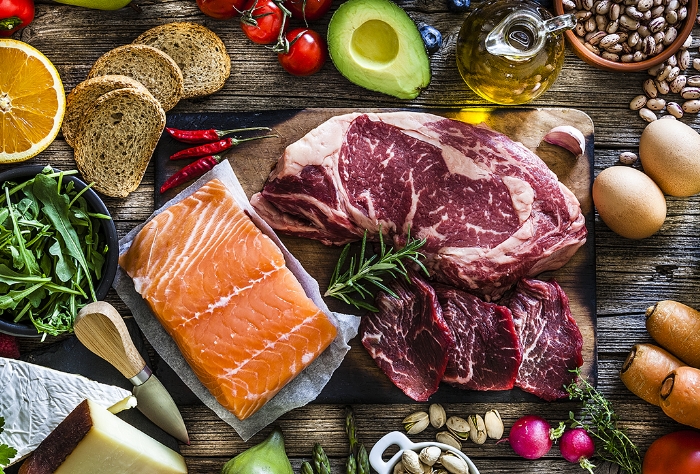ANTIOXIDANTS and FREE RADICALS
Antioxidants...free radicals...oxidative stress. We have heard of these but what do they all mean and how do they effect our health? The enviroment we surround ourselves in is full of toxins, chemicals, x-rays, pollutants, herbicides and pesticides all of which cause damage to cell, proteins and DNA.
Fortunately, our bodies are capable of counteracting the damaging physiological process that occur naturally. In order to control these desstructive chain reactions, our bodiy circulates nutrients for their antioxidant properties and manufacturing metabolic enzymes.
Free radicals are a biological response to environmental toxins produced when you have inflammation in your body and when you exercise. Free radicals can cause damage to our cells, accelerate aging, and are even linked to cancer. But they also play an important role in a number of biological processes, such as the intracellular killing of bacteria by white blood cells and some cell-signaling processes which can increase tissue repair and immunity. Oxidation reactions occur when the production of these free radicals is beyond the protective capability of the antioxidant defenses.
THESE ARE THE FIVE TYPES OF FREE RADICALS:
- Superoxide ion is derived from oxygen. This free radical can cause damage to mitochondria, DNA and other molecules.
- Hydroxyl radical is formed by the reduction of an oxygen molecule and will only react with molecules in its vicinity. Because of its high reactivity, it will damage most organic molecules, cuch as carbohydrates, DNA, lipids, and proteins.
- Singlet oxygen is formed by our immune system. Singlet oxygen causes oxidation of LDL cholesterol which produces inflammation in our arteries promoting atherosclerosis.
- Hydrogen peroxide is not a free radical but it is a byproduct of metabolic reactions and can play a role in the immune system.
- Reactive Nitrogen Species is produced as a response from stress and is derived from nitric acid.
It is impossible for us to avoid damage by free radicals since they arise from all sorts of sources inside and outside our bodies. Antioxidants are natures way of protecting us from free radicals. Antioxidants are nutrients such as vitamins and minerals as well as enzymes and proteins in your body that assist in chemical reactions. As our body ages, the antioxidant production provided by our bodies naturally declines. Around age 45, levels can dip as low as 50 percent below optimal.
Some antioxidants we must get from outside sources because our body does not make them naturally. a few well-known and well-researched antioxidant nutrients include vitamin C, vitamin E, carotenes, lipoic acid, copper, zinc, manganese and iron. If you don't have adequate antioxidants to help defend against free radicals, then oxidative stress tends to lead to acccelerated tissue and organ damage.
GLUTATHIONE
One of the most powerful antioxidants known is glutothione. Glutothione is comprised of three amino acids: cysteine, glutamine and glucine which makes it a tri-peptide. It nutralizes free radicals, enhances the immune system and detoxifies the liver. Dificiency of glutothione contributes to aging as well as many other diseases common in our society.
It is found within every single cell of your body and has the unique ability of maximizing the activity of all the other antioxidants, including vitamins C and E, CoQ10 and appha lipoic acid. Your dietary sources include vegetables and fruits particularly asparagus, spinach, avacado, and squash. Consuming protein is also essential for the formation of glutathione.

INCREASING YOUR ANTIOXIDANT LEVELS
Although it is difficult to absorb taken orally because glutothione is broken down by enzymes in the intestines, supplementation and a healthy diet with precursors for synthesis of glutothione can increase production.
Cysteine, one of the amino acids that actually make glutothione, can be taken as a supplement in the form of N-acetyl-L-cysteine. For anti-oxidant protection, one can take 500mg daily to start. The dosage may be increased with your doctor's supervision. Dietary sources can be found in eggs, turkey and chicken.
Alpha lipoic acid (ALA) which regenerates glutathione is both water and fat soluble. This means it can attack free radicals throughout the body, including in the brain. Dietary sources can be found in organ meats, broccoli, brussel sprouts, yams ans spinach. A few studies have suggested that 600 mg of alpha lipoic acid supplementationmay enhance the body's ability to use its own insulin to lower blood sugar in people with type 2 diabetes and improve symptoms of diabetic neuropathy such as numbness and tingling.
Selenium is one of the most important minerals that help the body recycle and produce more glutathione. Dietary sources of selenium can come from Brazil nuts, meats and seafood. Vitamin C and E also help nutralize free radicals.
As you can see, antioxidants are very beneficial to the body. Although we are capable of producing many antioxidants on our own, the environment, toxins, poor diet and lack of exercise can increase the damaging effects of free radicals and make it hard for our body to keep up.
In this day and age, proper supplementation is necessary to achieve and maintain optimum health.
Not sure what your needs may be? Our comprehensive nutritional evaluation can identify areas of dificiencies and guide you on the proper supplementation.
Posted In:
Diet and Nutrition
